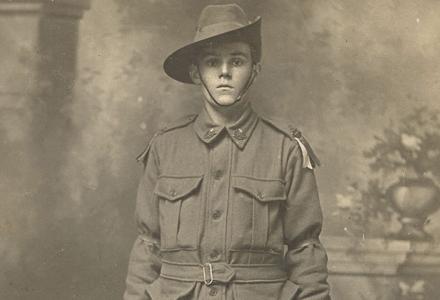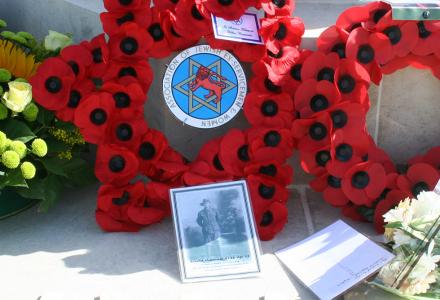Robert Pennington was one of the first men from Western Australia to enlist. At 26, with a black swan tattooed on his upper arm, he farewelled his mother and sailed off to war.
Driver Robert Pennington was wounded on 10 July 1915 at Gallipoli and died that same day on the hospital ship Gascon. He was buried at sea, three miles off the coast of Gabe Tepe.
Back home, his mother mourned the loss of her only son. And to remember Robert, Alice Pennington devised her own memorial. Prior to her son’s departure for war, she had built him a small shop in Como, South Perth. Intended as the means whereby Robert might earn his livelihood on his return, it now served as a monument to commemorate his death. Mrs Pennington wrote to the Australian Government asking to name her tea rooms ‘Anzac’—in honour of her only boy and of the place that had claimed him.
But the ‘Anzac Tea Rooms’ in Coode Street were denied permission to operate. The name of the establishment was deemed a breach of legislation protecting the ‘sacred’ word ‘Anzac’ from commercial use.
In the two decades following the Gallipoli Landing the Australian Government rejected hundreds of applications to use the name ‘Anzac’. Some such requests were no doubt made with personal gain in mind. Billiard rooms, mining syndicates, news agencies, even housing estates sought to use the word ‘Anzac’ for trading purposes. But applications also came from returned servicemen, grieving relatives, and many from women like Mrs Pennington, denied the solace of a known grave. The Australian Government still claims the power to monopolise the memory of Anzac. In the lead up to the Anzac Centenary it even questioned websites, designed for educational purposes, that were free to use and had no commercial use.
Robert Pennington’s story raises larger questions about the custodianship of Anzac memory. Protecting the word ‘Anzac’ from commercial exploitation is one matter, respecting the right of the community to interpret, contest, or honour ‘Anzac’ another. It also alerts us to something of an anachronism. To Mrs Pennington’s generation, Anzac may well have had a sacred dimension. Can the government still make such a claim in a modern and secular age?



